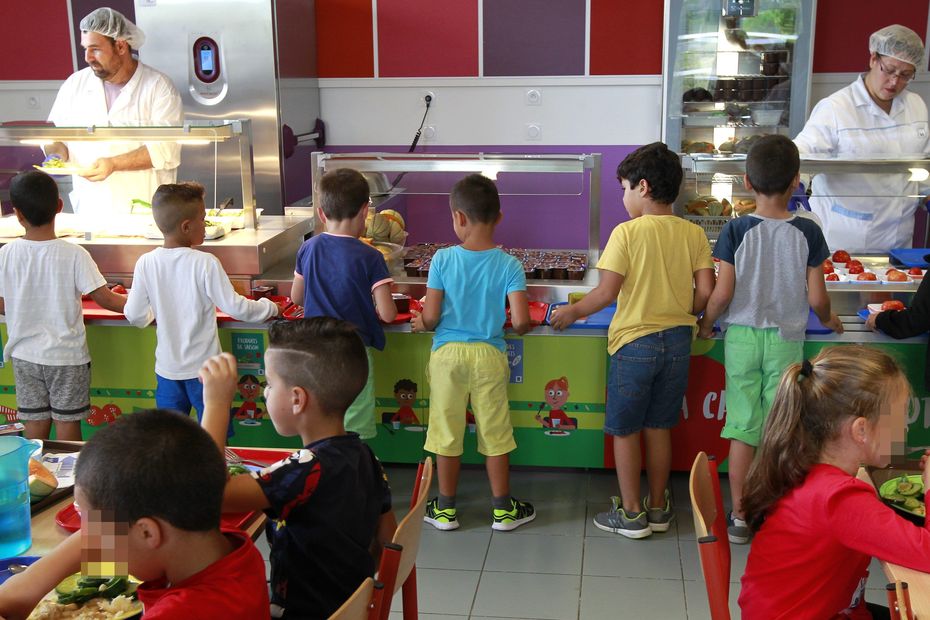The Minister of Agriculture wants the canteens to help producers of young French cattle by buying their meat on a massive scale. What about Dijon?
–
From young cattle for young French people. This is what the Minister of Agriculture, Julien Denormandie wants. He called on Thursday February 18 the managers of school canteens to order massively. The timing of the minister’s call is not trivial: the industry is not going well. Exports to Italy, which until then had been an important outlet, are drying up. In short, the sector is in crisis and the breeders in suffering.
.@J_Denormandie answers Olivier Rietmann (LR) on farmers: “The law #Egalim today, there are actors who do not respect it. We are stepping up controls, everywhere in the country “#QAG pic.twitter.com/bUwLOP5K9R
– Public Senate (@publicsenat) February 3, 2021
In Burgundy, several communities are trying to promote short circuits in the menus of school canteens. However, including in the country of Charolais, the presence of local beef on the plates of the canteens remains relatively rare.
In Dijon, 30 tonnes of French beef per year
The Dijon metropolis takes care of providing 8,000 meals per day to nursery schools, elementary schools and leisure centers. According to figures communicated by Philippe Lemanceau, vice-president of the metropolis in charge of the food transition and collective catering, a family living in Dijon pays for their child’s meal between 1.17 (or even 50 centimes for those in difficulty) and 6.78 euros, depending on his income. On average, families pay for the meal 3.36 € while the cost of the meal for the city is 12.9 euros.
For this price, children have the right to French veal but not local, supplied to the tune of 1.2 tonnes per year, or about “one sautéed veal per month” according to Philippe Lemanceau, vice-president in charge of collective catering.
On the other hand, part of the beef consumed is bought from “Breeders of the Green Coast“, producers of Auxois, Morvan or Charolais. They provide 200 kg of meat per month, but only in the canteens of the leisure centers of the city. This therefore concerns a more limited number of meals.
“For school meals, the supply of beef is a total of 30 tonnes per year. The meat is of French origin, not only regional, from meat breeds with traceability”, adds the vice-president.
The sector must be profitable for the breeders.
The representatives of the sector welcome the Minister’s call and also wish to work with collective catering, provided that “the sector is profitable for the breeders”, explains Catherine Mousseron, director of the inter-professional association Interbev Bourgogne-Franche-Comté. To ensure that the production price is taken into account, it wants an agreement to be contractualized.
The additional cost that these new contracts could represent is not insurmountable according to Philippe Lemanceau, and could be borne by the metropolis. The elected representative highlights the results of recent years and the savings made “thanks to the reduction in food waste by 40% over the past two years and the introduction of a vegetarian meal once a week”.
Two measures from the Egalim law, which also obliges school canteens to offer 50% local products by 2022. In this context, Philippe Lemanceau recognizes that efforts must be made in the veal sector, in particular to buy meat from animals raised in the region. Calf and young cattle breeders do not currently work with local catering. “There is a job to be done and it is not done in a few days”, he sums up.
More than the cost, logistical and cultural obstacles
More than the cost, it is logistical details that could be brakes on the consumption of regional calves and young cattle. Schools do not want to receive carcasses but portions already cut, a factor to be taken into account for breeders. They should also think about “material balance” according to Yves Largy, President of Interbev Bourgogne-Franche-Comté. That is, no part of the animal should be wasted. “For children, the pieces of meat available should be chosen on the front of the beast, less noble and less expensive. But suddenly, what do we do with the back?”, asks the president.
“For children, the pieces of meat that can be delivered will have to be chosen on the front of the beast, less noble and less expensive. But suddenly, what do we do with the back?”
Finally, Philippe Lemanceau notes that if young cattle are offered to children in the canteen, cultural work has to be done. These animals are to be distinguished from the calf by their age and their diet. As a result, their meat has a different color: “children must admit to eating pink meat, and not white, a sign of a deficient animal”. In short, nothing impassable once again.
But increasing the consumption of beef in canteens will not solve the structural problem of the sector, according to some professionals. Emilie Jeannin, breeder of Charolais at the Lignières farm, in Beurizot (Côte d’Or) and member of the Confédération paysanne union, the minister’s appeal looks like a “announcement effect”. She ensures that the solution proposed by the minister will not solve the problem, structural in her opinion, of the overproduction of young cattle. “The CAP premiums are indexed to the size of the herd and the number of heads. This encourages breeders to have a lot of them, while the outlets are no longer there”, she explains, judging that it would be more judicious to question these aids.
–


